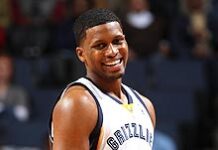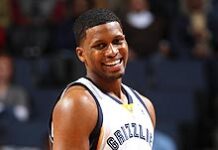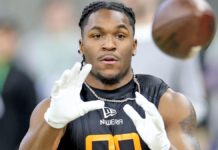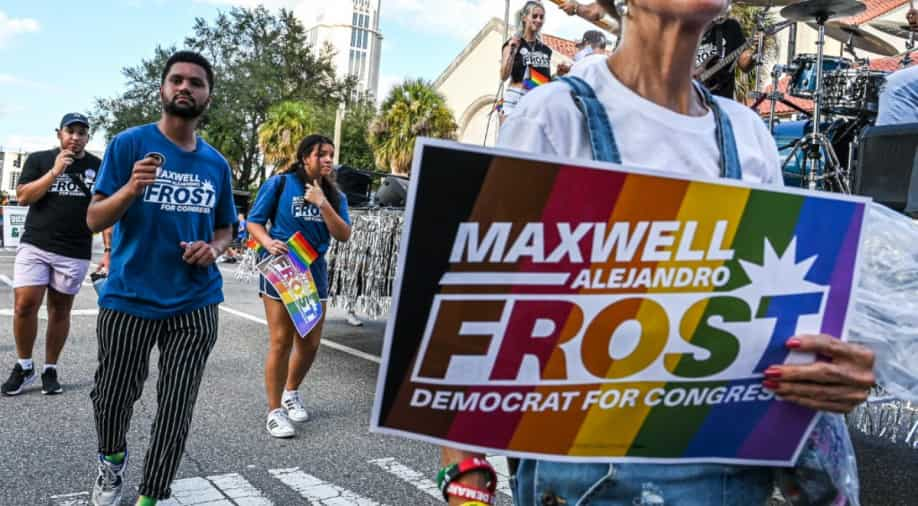LGBTQ youth play team sports far less than the general population, with some citing fears of bullying or discrimination as the reason.
The finding, reported in a briefing issued this week by the Trevor Project, is troubling for advocates who fear those youth are losing out on sports’ benefits – and it comes as efforts rise to stifle participation by some in the community. Lawmakers in more than 20 U.S. states have introduced bills that would ban transgender athletes from high school and college sports or require students to play only against those assigned the same gender at birth.
“It is a cruel irony that state lawmakers continue to push legislation that would ban transgender and nonbinary youth from participating in sports, while so many youths already choose not to participate out of fear of discrimination and bullying,” said Carrie Davis, chief community officer for the Trevor Project, which focuses on suicide prevention among LGBTQ youth.
Around the country, lawmakers pushing bans on transgender athletes have warned of scenarios in which physically dominant athletes suddenly inundate girls’ sports. An investigation by USA TODAY revealed such speculation to be based on overstated or outright false anecdotal information.
‘The locker room was always a nightmare’
The Trevor Project’s newly released briefing highlights information gleaned from the organization’s annual survey on LGBTQ youth mental health. The nationwide study, conducted in late 2020, included responses from 35,000 LGBTQ youth and individuals aged 13 to 24.
According to the report, only a third of respondents reported ever participating in team sports, either in school or in a community league or club. Meanwhile, data collected in 2017 by the U.S. Department of Health and Human Services showed that 58% of all youth aged 6 to 17 had played team sports or taken sports lessons in the previous year.
“The rate of LGBTQ youth participation in sports is significantly lower than that of their straight, cisgender peers, indicating that more needs to be done to make sports a welcoming and affirming environment for all who wish to play,” Davis said.

Survey respondents were asked to indicate how often they participated in various activities compared to before the COVID-19 pandemic, with sports among the options.
“I never hated sports,” wrote one respondent, “but I hated how I was treated by kids and adults who played sports. The locker room was always a nightmare, the athletic kids at my school hated me, the coaches at my school hated me.”
The same respondent said they avoided athletic activities “out of terror, not disinterest.”
Another wrote that her female classmates objected to her changing with them in the locker room, fearful she would stare at or hit on them because she is lesbian.
“One of the biggest reasons LGBTQ youth don’t participate is the fear of bullying and discrimination,” said Paula Neira, national secretary of GLMA: Health Professionals Advancing LGBTQ Equality, an advocacy organization based in Washington, D.C. “And when you’re talking about transgender kids, it’s the outright attempt to ban their participation for reasons that aren’t based on anything real. It’s the stigmatization.”
Sports promote belonging and positive mental health for LGBTQ youth
Sports benefits for youth are more than physical, offering friendship, camaraderie and lifelong lessons in team-building, goal-setting and self-discipline.
“For LGBTQ folks, sports are a way of being recognized as part of our social groups,” Neira said. “When LGBTQ youth aren’t able to participate fully in athletics, it increases isolation and that sense of being ‘the other.’”
Respondents in the Trevor Project survey also said sports helped them cope with gender dysphoria, depression and identity-related stress, which makes their low participation rates “especially devastating,” said Joanna Hoffman, communications director for Athlete Ally, a New York City-based organization dedicated to ending homophobia and transphobia in sport.
When teammates and coaches who may not consider themselves discriminatory use “locker room talk” or practice other anti-LGBTQ behavior, Hoffman said, it perpetuates an unwelcoming culture for LGBTQ athletes. She advocates comprehensive education for teams, coaches and leagues about LGBTQ respect and inclusion.
“Anti-LGBTQ language, regardless of intent, sends a message to LGBTQ athletes and fans that it isn’t safe for them to be their authentic selves,” she said.
Willow Breshears, an 18-year-old transgender activist in Little Rock, Arkansas, said friends in school often urged her to join them on the volleyball squad, but she ultimately chose not to.
“Being trans definitely impacted my decision,” Breshears said. “I just never felt comfortable. I would have been looked at differently.”
For Breshears, it was the sense of belonging that she’d most looked forward to, the bonding with teammates that happens while working toward the same goal.
“People who have been in sports for years feel like those people are their family,” she said.

Team bonds can be crucial for LGBTQ youth, said Jack Turban, a fellow in child and adolescent psychiatry at Stanford University’s School of Medicine in California.
“They look out for each other and protect each other,” Turban said. “This is particularly important for LGBTQ youth who may be experiencing harassment or bullying from kids outside their team.”
For transgender youth, ongoing national discourse opposing their participation in sports is particularly damaging, he said.
“Politicians and pundits have been saying they’re a danger to their peers,” Turban said. “While transgender youth may know this isn’t the case, hearing that over and over can start to sneak into their unconscious … and drive anxiety and depression.”
LGBTQ presence in major sports
A handful of athletes in major sports have gone public in the last decade about their LGBTQ identity. Carl Nassib, a defensive end for the NFL’s Las Vegas Raiders, came out as gay earlier this year; so did Collin Martin, of Major League Soccer’s Minnesota United, in 2018.
In 2013, the NBA center Jason Collins came out as gay toward the end of his 13-season career, playing one final season with the Brooklyn Nets.
This year’s Olympics in Tokyo featured at least 180 LGBTQ athletes, with 33 medal wins. The Tokyo competitors included New Zealand powerlifter Laurel Hubbard, the Games’ first openly transgender athlete.
Previous Trevor Project research shows that LGBTQ athletes are less likely to be out about their identity compared to LGBTQ youth who are not involved in sports.
“Given the existing mental health and suicide disparities experienced by LGBTQ youth compared to their straight and cisgender peers, there is an urgent need to provide sports leaders and coaches with training on ways to better support LGBTQ youth athletes and their mental health,” the project’s briefing concluded.
Breshears, the Little Rock activist, doesn’t regret her decision to not try out for the volleyball squad.
“Even though it’s something I wish I would have been able to do, I didn’t, ultimately – to protect myself and my own wellbeing,” she said.








